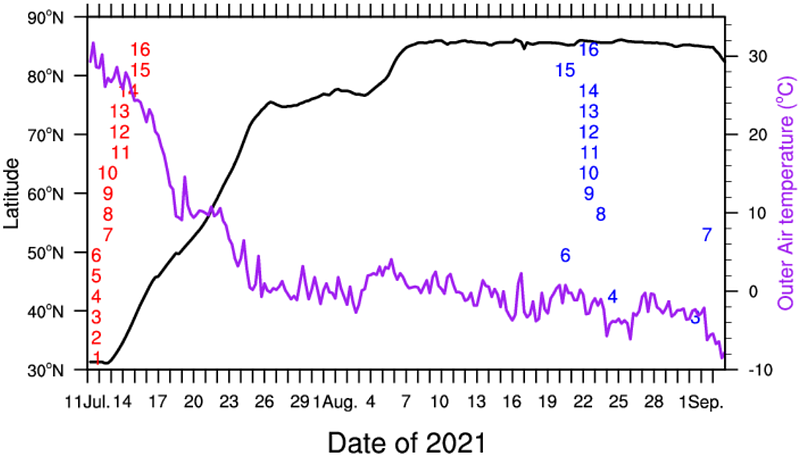The impact of Arctic environments on human cerebral blood flow

The impact of Arctic environments on human cerebral blood flow
Liu, F.; Zheng, T.; Chen, J.; Liang, H.; Li, G.; Hao, J.
AbstractBackground: The Arctic environment represents an extreme living condition that has significant impact on life. But research on alterations of human cerebral blood flow (CBF) in a high-latitude and low-temperature environment in the Arctic is still lacking. Methods: Members of the 12th Chinese National Arctic Research Expedition team who took the icebreaker R/V Xuelong 2 to the Arctic were recruited. Transcranial colour doppler (TCD) examination was performed at the beginning of the voyage (lower latitude and higher temperature, LLHT) and during the Arctic scientific expedition period (higher latitude and lower temperature, HLLT) respectively. The spectral pattern and parameters of cerebral arteries were compared. Results: Among 16 healthy individuals, 13 completed the TCD examination twice. They had a significantly lower mean velocity (Vm) (63.5 cm/s HLLT vs. 68.4cm/s LLHT; P=0.028) and peak systolic velocity (PSV) (94.6cm/s HLLT vs. 107.0cm/s LLHT; P=0.038) of the left middle cerebral artery (LMCA) and higher pulsatility index (PI) of the right middle cerebral artery (RMCA) (0.83 HLLT vs. 077 LLHT; P=0.011) in the HLLT environment compared to the LLHT one. Conclusions: Changes in human CBF may occur in higher-latitude and lower-temperature environments in the Arctic.